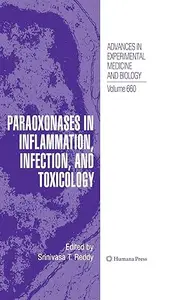
Free Download Srinivasa T. Reddy, "Paraoxonases in Inflammation, Infection, and Toxicology"
English | 2009 | pages: 215 | ISBN: 1607613492 | PDF | 3,3 mb
Biomarkers are used in many aspects of health surveillance to identify disease pr- ence, track disease progression, monitor drug delivery or metabolism, or monitor chemical exposure. There is a recognized need to expand and improve biomarker identi?cation and quanti?cation. Exposures to the xenobiotic organophosphates (OPs) range from low-level, chronic exposure during pesticide application (e. g. , on farms, in residences, or in the workplace) to high-dose, acute exposures incl- ing release of nerve agents or toxic industrial OPs. OPs can have both rapid and chronic toxicity, due to their action on speci?c esterases and lipases, most notably acetylcholinesterase (AChE) and neuropathic target esterase (NTE). In each of the above examples, a rapid and accurate assessment of the OP to which the person was exposed, degree of exposure, and time period of exposure will help direct therapy to the victim and assess the level of threat to others. Traditionally, metabolites for speci?c OPs can be measured in the urine after an exposure, such as 3,5,6-trichloro- 2-pyridinol for chlorpyrifos (CPS). However, there are several problems with this method. Usually, the metabolite is excreted for only a short period of several days after a signi?cant exposure. In addition, due to the widespread use of CPS and en- ronmental persistence of its breakdown products, the metabolites appear at a high background level in the general population (Hill et al. 1995). Their appearance does not indicate whether the individual was exposed to the harmful parent compound, or the harmless breakdown product.
Code:
Bitte
Anmelden
oder
Registrieren
um Code Inhalt zu sehen!